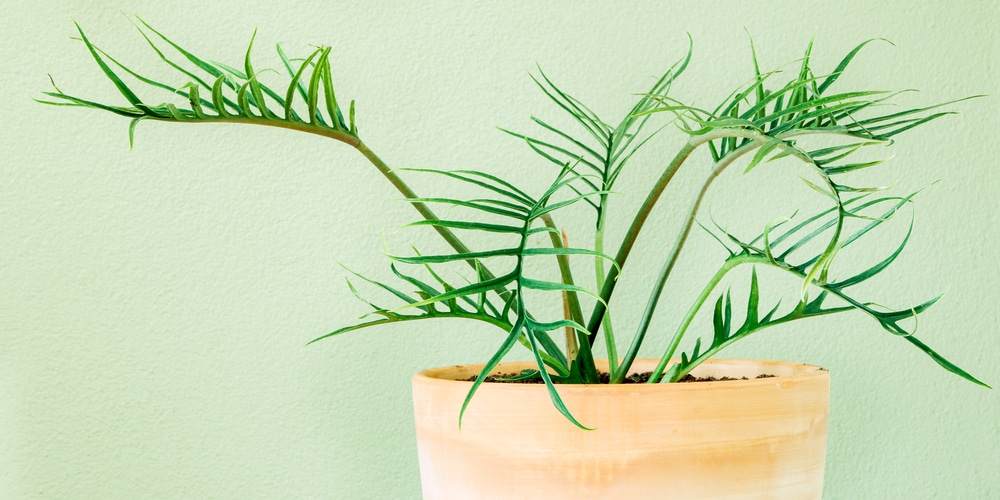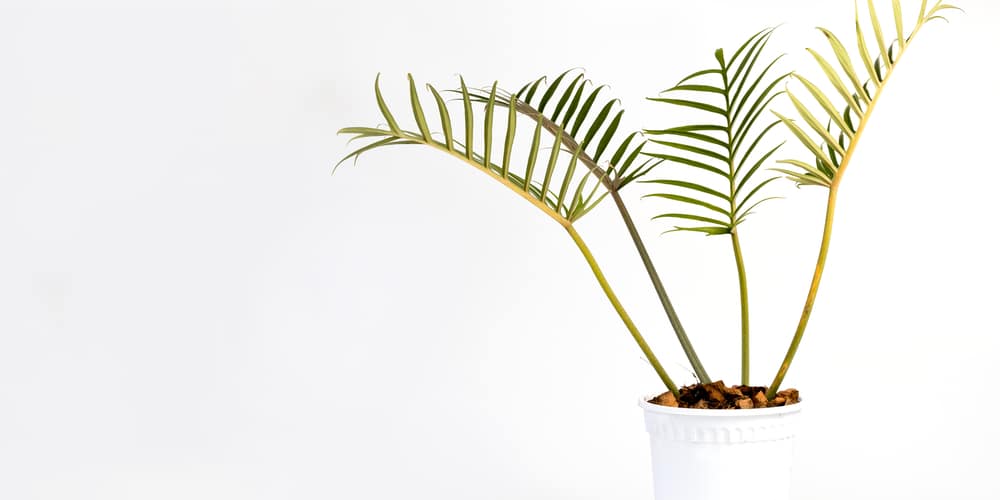Philodendron is a genus of flowering plants with over 500 species. The Philodendron Tortum has been used as houseplants and office plants for years. It’s an evergreen perennial which originates from the rainforests of Brazil and other tropical regions of South America and is often grown as an epiphytic houseplant. Let’s look at how to grow and care for a philodendron Tortum.
What is a Philodendron Tortum?
The Philodendron Tortum is a beautiful tropical plant that’s part of the Araceae family. It can grow up to 10 feet high in the wild, where they attach themselves to trees in their native habitats using aerial roots. These plants will remain more compact when grown as a houseplant.
Philodendron Tortum plants have beautiful dark green, split leaves. The leaves are long and thin and look almost skeletal. These plants are popular as they are air purifiers. The philodendron Tortum can be grown outside year-round in USDA zone 9 to 12. You can move your plant outdoors for the summer in slightly colder climates, as long as you bring it in when temperatures start to fall.
Philodendron Tortum Care Guide
The philodendron Tortum is a beautiful tropical plant that is easy to care for. If you’re inexperienced at looking after tropical plants, you should aim to get the basics of light, water, and humidity right. Here are some tips to help you grow a thriving philodendron tortum:
Sunlight needs
Philodendrons are shade plants as they naturally grow in the rainforests are being overshadowed by larger plants and trees. If they receive too much shade, they can become weak. Placing them in moderate to bright light will keep the plant compact instead of spindly.
The Philodendron Tortum needs at least six hours of sunlight a day to look their best. Be careful not to leave your plant in the full sun, or it may become scorched, which will cause brown patches to form on the leaves. You should also turn the pot regularly so stems grow evenly toward the light source.
Watering Requirements
Water thoroughly and allow the top 2 inches (5 cm) to dry out before watering again. Waterless frequently is required in winter. Overwatering or low moisture is among the issues that weaken the Philodendron plant’s. If you want your plant to be healthy and strong, it should not sit over wet soil for over three days. The best way to water this plant is by leaving the topsoil to dry out completely and then soaking the plant. This will help you avoid root rot, which may kill your plant.
Temperature and Humidity
The ideal temperature for Philodendron Tortum is 60 to 75°F (16-24°C) during winter and 70to 85°F (21-29°C) during summer. If your plant begins to show signs of blackening on its leaves, it means that the humidity is too low or it has been left in a draught. You can increase its humidity by misting or setting it beside a humidifier. You can also keep an indoor plant spritzer and spray the top of the soil and the leaves once every day.
Try to maintain 50% relative humidity or higher. Good air circulation is essential for keeping the plant healthy, so place on a tray of wet pebbles or use a humidifier if the air is dry.
Pests and Diseases
Aphids, spider mites, whitefly, and scales may attack your Philodendron plant. If you see black spots on the leaves, it is an indication that aphids are present. These insects excrete a sticky substance as waste which could lead to black mold growing on the leaves. If an insect infestation has occurred, you can treat your plant with neem oil or an insecticidal spray.
Soil
Standard potting mix can be used, and you can add some perlite and peat moss. Philodendron Tortum likes soil that’s well-draining and loose with a pH range of between 5.0 and 7.0. Keep the soil barely moist but not soggy.
Fertilization
Feed every two weeks during the growing season with a balanced liquid fertilizer diluted by half.
Propagation
Take a 3 to 4-inch stem cuttings in spring or summer. Place the cutting in water and wait for roots to grow before planting in the soil. Alternatively, dip the cutting in rooting hormone and plant directly into the ground.
Conclusion
Philodendrons are the most common houseplants worldwide; they are among those plants that renew our interior spaces by giving us a place to sit and relax. They can grow indoors or outdoors in the right climate.

